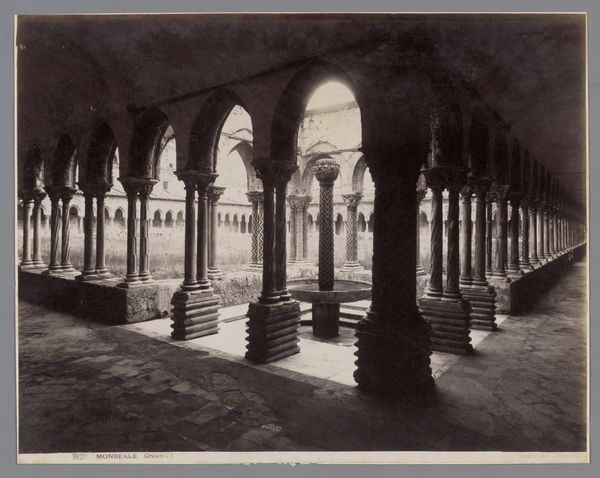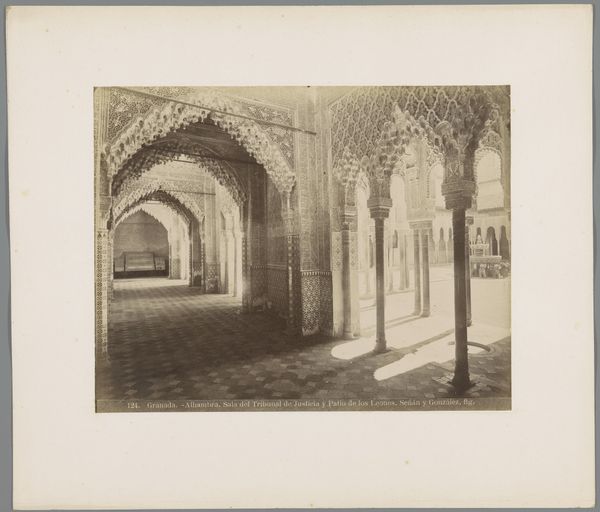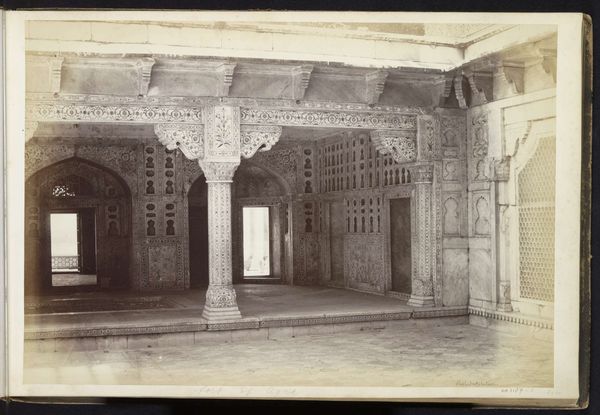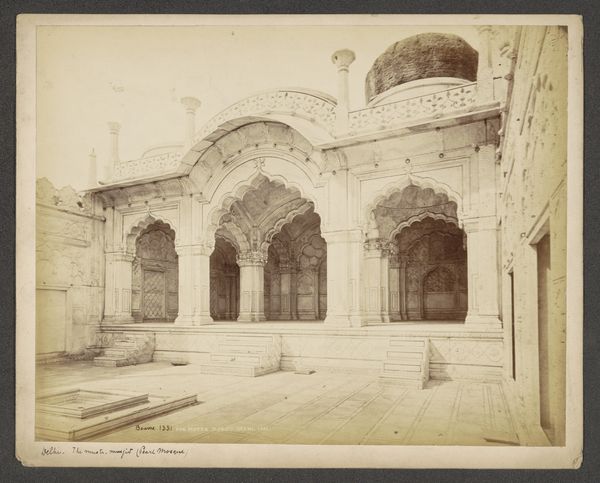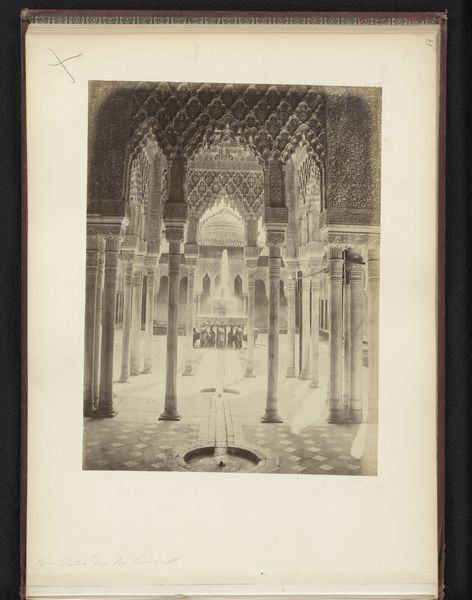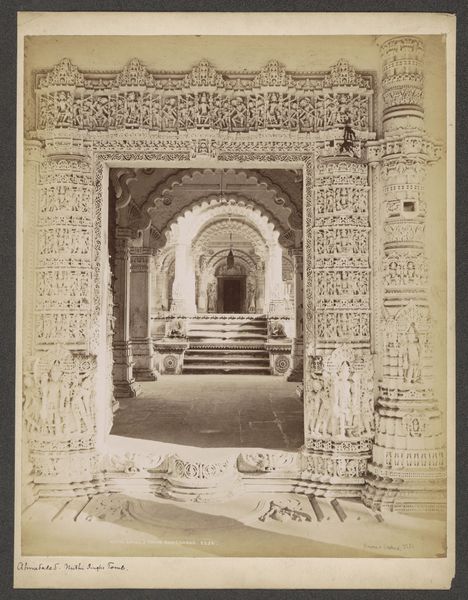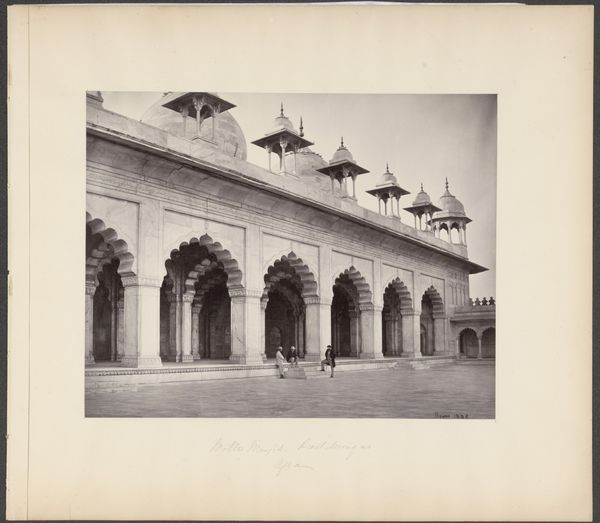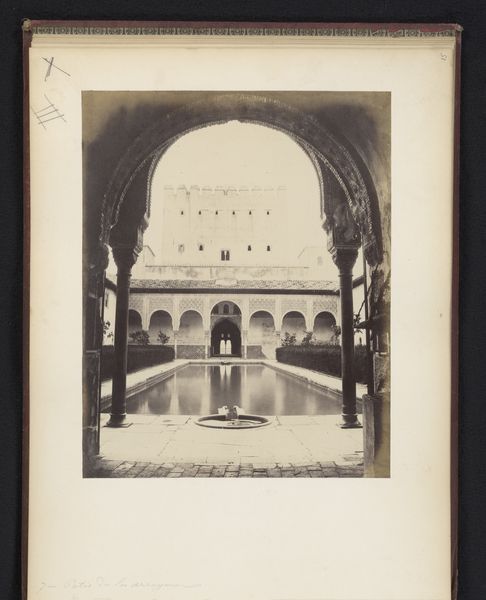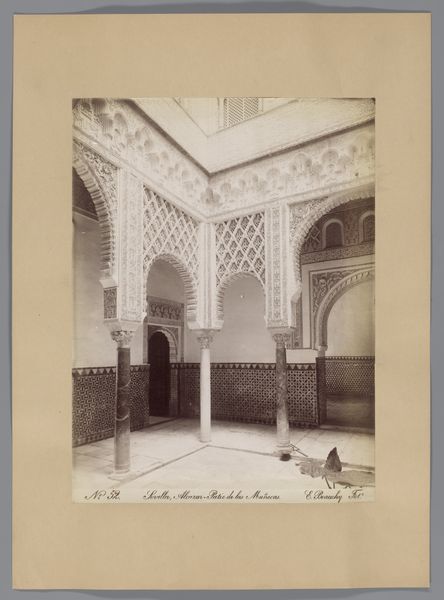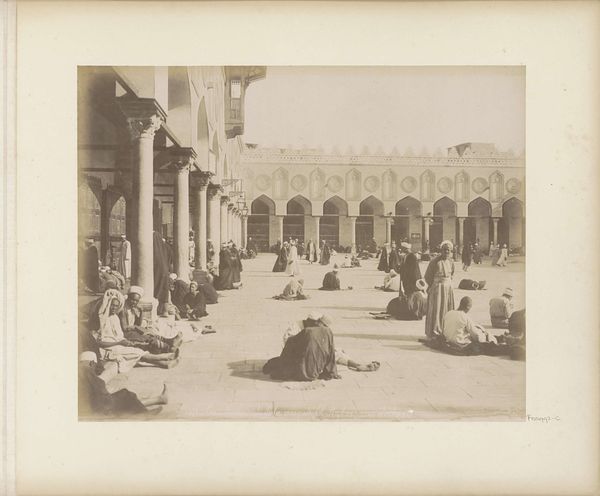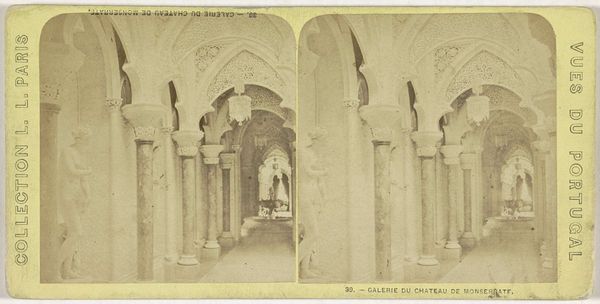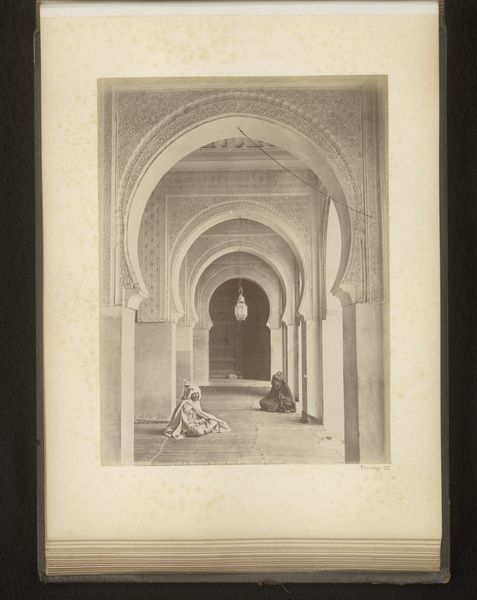
Two praying men inside the Moti Masjid of Agra Fort, Uttar Pradesh, India 1863 - 1870
0:00
0:00
photography
#
portrait
#
landscape
#
photography
#
orientalism
#
islamic-art
#
realism
Dimensions: height 220 mm, width 282 mm, height 238 mm, width 316 mm
Copyright: Rijks Museum: Open Domain
Editor: This stunning photograph, taken by Samuel Bourne sometime between 1863 and 1870, shows two men praying inside the Moti Masjid in Agra Fort. The endless rows of arches really draw you in... it almost feels staged, like a glimpse into a lost world. What strikes you about this image? Curator: Well, the photograph’s power, for me, lies in understanding how Bourne, a British photographer, consciously positioned himself within a larger, colonial project. Consider the socio-political implications: photographing sacred spaces, and then circulating those images back to Britain, ultimately shaped public perception of India. Don't you think that these sorts of images were critical in forming popular ideas of the "Orient" at the time? Editor: Absolutely. I can see how that would have influenced how people back home viewed India. But, beyond that, it almost seems to have a reverential tone. What do you make of that interplay between documentation and possible exoticization? Curator: I think that duality is exactly where the tension, and frankly, the complexity lies. Bourne’s aesthetic choices, framing these praying figures against the grand architecture of the mosque, are also deliberate choices to evoke a certain sense of wonder, even, as you say, reverence. But does it truly transcend the colonial gaze, or does it merely reinforce it through romanticization? We have to ask ourselves, who benefits from this depiction and to what end? Editor: That makes so much sense when you put it like that. I had been thinking mostly of aesthetics, but seeing how the photograph operated in a social and historical context makes it far more thought-provoking. Curator: Precisely! By interrogating its context, we see that this photograph, though seemingly a beautiful snapshot, is very much a constructed representation of a power dynamic between colonizer and colonized. Editor: Thanks, I definitely have a richer understanding now of this image and how it would have been perceived then and how we can appreciate it, with some caution, today.
Comments
No comments
Be the first to comment and join the conversation on the ultimate creative platform.
